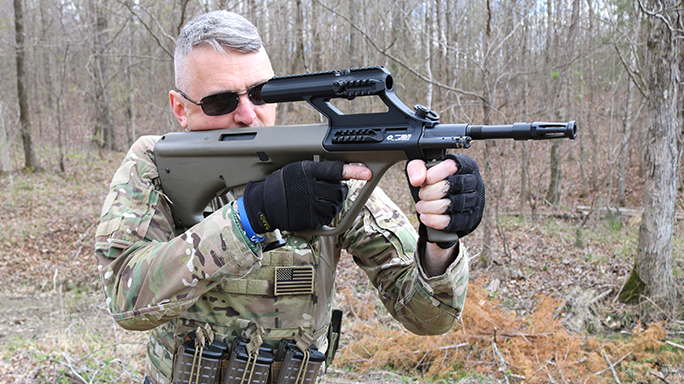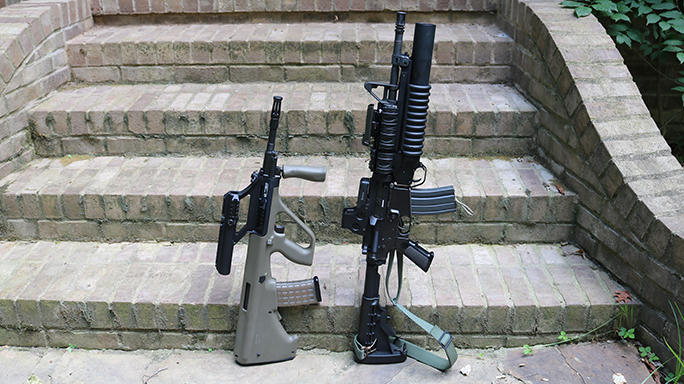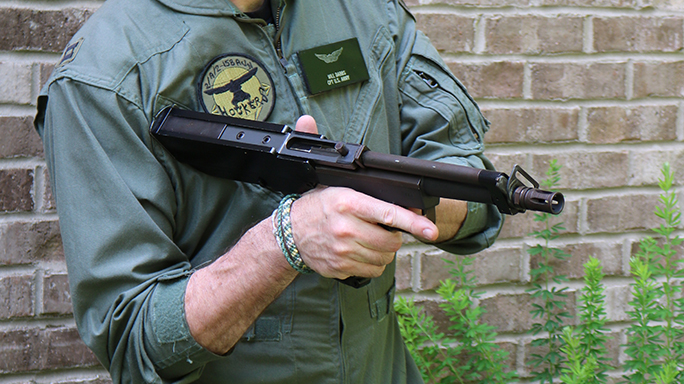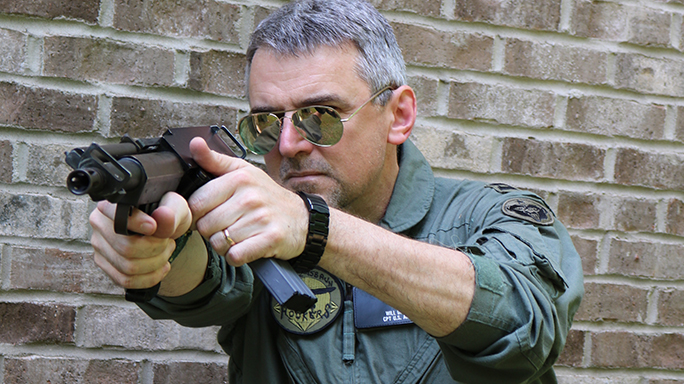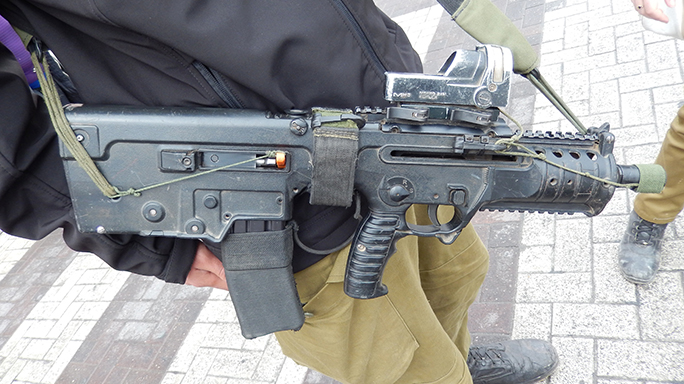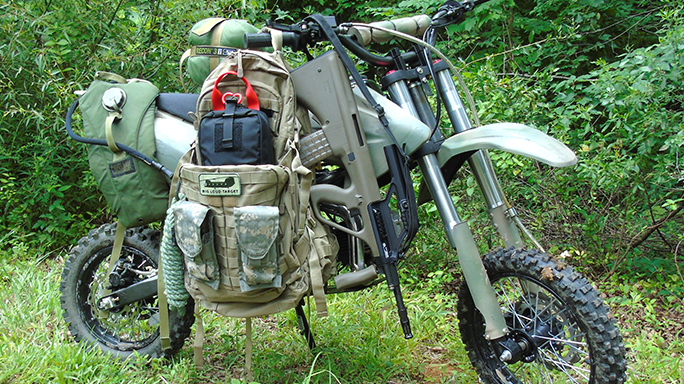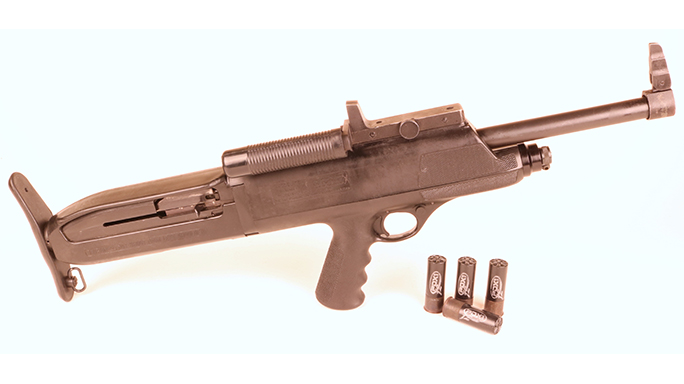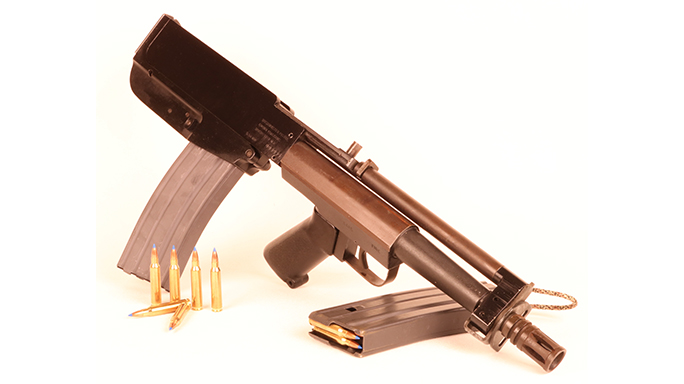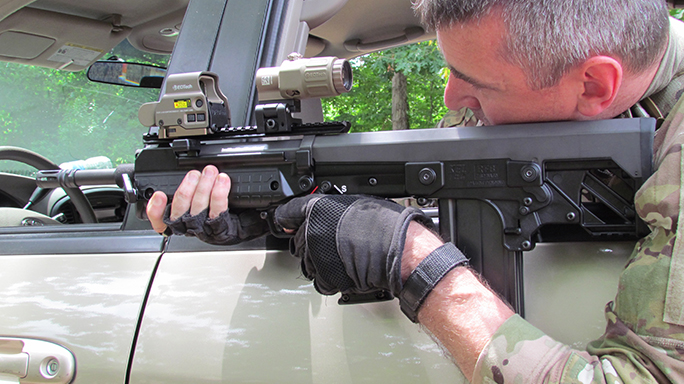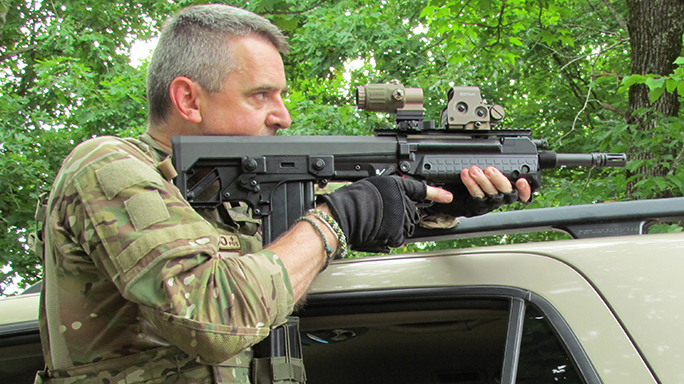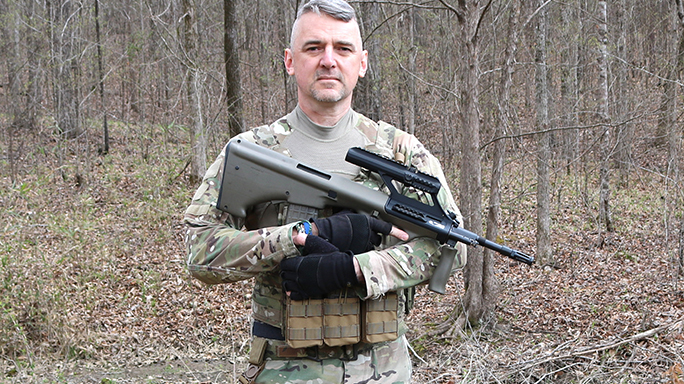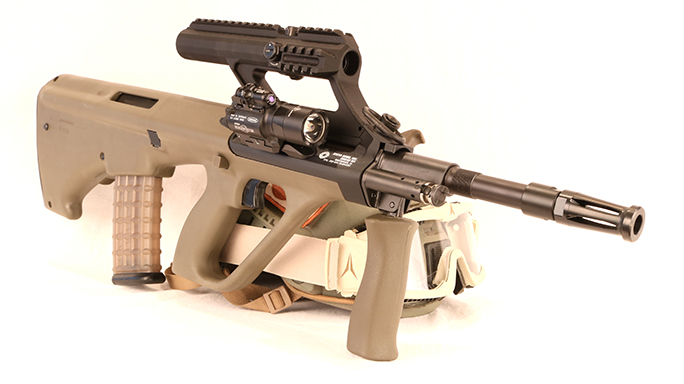Bullpup rifles will never displace the AR as the modern American gun nerd’s go-to iron. Now that you can land a conventional low-end utility black rifle for around $500, no amount of whiz bang awesomonium is going to convince rank and file American shooters to bin their inexpensive Stoner guns in favor of something compact, backwards and spendy. However, as niche weapons, I believe bullpups will always have a robust place in the market.
The Origin of the Bullpup Species
It all began with English patent number 14,622 issued on July 18, 1901. On that date, the bolt-action Thorneycroft carbine first officially drew breath. Unconventional, unprecedented, and flat-out strange, the Thorneycroft was the world’s first bullpup weapon. This odd rifle fired the British standard .303 rifle cartridge through a five-round internal magazine. The gun’s retracted bolt was oriented in the rear of the stock behind the firing mechanism. This insightful design made the gun 7.5 inches shorter and 10 percent lighter than the standard issue Lee-Enfield rifle of the day. It also offered wretched ergonomics and simply brutal recoil.
The origins of the term bullpup have long been shrouded in mystery. After a literal lifetime of searching, I tripped over a reference that might finally address this etymological conundrum. During World War II, the Japanese produced an unconventional submachine gun chambered for the 8mm Nambu cartridge. The gun, called the Experimental Model 2, sported a telescoping bolt and 50-round magazine that fed through the grip. Despite these advanced features the gun remained unreliable and, as such, was produced in very small numbers.
Advertisement — Continue Reading Below
Allied ordnance men who encountered this unconventional weapon declared it to be rare as a “bullpup” and the name stuck. The term bullpup was also used in the 1950s to describe any target handgun with particularly fancy stocks. How the moniker made the jump to the Steyr AUG is anybody’s guess.
Successful Bullpup Options in the Information Age
The Steyr AUG was arguably the most successful of the lot, but it hit the streets back in 1977 in the days of “Jaws,” “Star Wars,” bellbottom blue jeans, and disco. Since then the AUG saw widespread distribution, as well as some significant combat time, particularly in the capable hands of Australian diggers. The AUG was the world’s first polymer combat rifle, and it remains competitive even today.
RELATED STORY: Steyr Master: Steyr Arms’ Aug/A3 M1
Advertisement — Continue Reading Below
The AUG introduced the world to general issue integral optical sights and polymer magazines. The AUG’s fire selector was built into the trigger. Scant pressure yielded semi-auto fire while a full pull produced rock and roll. The AUG is a bit heavier than a comparable AR rifle, but markedly shorter.
The Israeli Tavor has seen widespread service with the Israeli Defense Forces and remains a popular civilian defensive gun on this side of the pond. The Tavor uses NATO standard AR magazines, and, like all Israeli weapons, is superbly executed. Sporting a robust piston-driven action and trooper-friendly controls, the Tavor is combat proven.
RELATED STORY: Testfire: Torturing IWI’S Tavor SAR
Advertisement — Continue Reading Below
During a trip to Israel a few years ago I encountered the Tavor in the hands of IDF troops fairly frequently. M4 carbines of several variations were in common use as well, at times apparently within the same units. IDF troops with whom I spoke praised the Tavor for its reliability and compact footprint, particularly within vehicles.
The Kel-Tec Cousins
Kel-Tec is reliably strange. This Florida-based gun company has produced some of the most novel firearms of the modern age. They are engineering artists, and polymer is their preferred medium.
The RFB is a remarkably compact .308-caliber battle rifle that feeds from FAL magazines. Interestingly, the RFB ejects out the front. This feature neutralizes what is arguably the biggest shortcoming of most bullpups, the inability to be readily run from both shoulders. It is, however, mechanically complex as a result.
Advertisement — Continue Reading Below
The younger RDB is an ambidextrous bullpup .223 rifle that ejects out the bottom. Both the RFB and RDB are brilliantly executed firearms that suffer from the lack of a reliable combat pedigree. Neat though they are, until somebody actually humps the guns in a war zone it will be difficult to earn reliable street cred.
The Not-So-Hot
There have been scads of others. The Bushmaster Arm Gun was intended as an aircrew survival weapon back in the 1970s. The High Standard Model 10 shotgun was going to revolutionize the Law Enforcement shotgun. The FN2000 looked like a Star Wars blaster, but was remarkably bulky.
The British L85 should have changed the game, but ultimately failed to live up to its hype. After a massive HK redo, the gun has yielded good service in combat, but its early teething troubles have tainted its reputation, likely irrevocably. Had a semi-auto version of the L85 been available for sale in the U.S. it would have done well, but that ship has now sailed.
Advertisement — Continue Reading Below
Singapore, Russia, South Africa, and a dozen or so other countries have dabbled in the genre. In some cases the guns found some modest legs, but most ultimately fizzled. The reasons for this are many-splendored.
The Good, The Bad, and the Ugly
Hype notwithstanding, the primary benefit you get from a bullpup combat rifle is the capacity to employ a proper barrel length in a small overall platform. Modern small caliber bullets rely on velocity for effectiveness. Cutting your 5.56mm barrel down to 7.5 inches definitely earns you some cool points, but if the velocity drops too low, you have just created a very expensive .22 rifle. Bullpup designs allow you to keep your tubes long without compromising portability. A Steyr AUG with a 16-inch barrel is nearly three inches shorter than an M4 carbine with a 14.5-inch tube and the stock collapsed. Extend the stock for firing on that M4 and it becomes 5 inches longer than the longer-barreled Austrian heater.
A perennial challenge with bullpups involves keeping the trigger smooth despite its long reach. By definition a bullpup trigger has to transfer energy through a markedly longer distance than that of a more conventional rifle. Nowadays, however, gun manufacturers have pretty much broken that code. Most modern bullpup triggers are not much creepier than those of conventional combat rifles.
Advertisement — Continue Reading Below
RELATED STORY: 13 Elite Bullpups For Close Quarters Combat
The long pole in the tent is bilateral operation. Serious use guns really need to be able to be fired from both shoulders. Right-handed operators clearing a right-handed corner are at a marked disadvantage if they cannot swap their weapon to the left shoulder to maintain a low profile. Some bullpup designs adequately accommodate this conundrum, while others do not.
Cogitations
Little is more reassuring than a nicely stoked Israeli Tavor tucked behind the seat of your pickup truck should civil unrest spill over into the freeway and leave your vehicle surrounded by crazed rioters. Additionally, never underestimate the capacity of the typical American Rugged Individualist to be both rugged and individual. A modest slice of the gun-owning community will always want something different just to be different; that factor alone should keep bullpups puttering along for the foreseeable future.
Advertisement — Continue Reading Below
